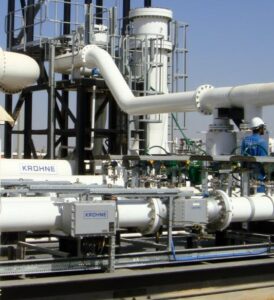KROHNE highlights advancements in ultrasonic flowmeter verification

Ultrasonic Flow Meter Verification emphasises the importance of optimising custody transfer processes and reducing operational costs.
Ultrasonic meters offer advantages over mechanical meters, including the absence of moving parts, minimal wear and tear, reduced maintenance, and long-term reliability. Integrating these meters with small volume provers presents unique challenges and requires specific adaptations to both provers and flow meters to ensure successful implementation.
KROHNE's ultrasonic flowmeters feature unique Reynolds number characterisation, which minimizes sensitivity to fluid property changes, ensuring consistent meter performance across various refined and crude products, provided it's been characterised during the calibration stage.
The meters' stable geometry eliminates drift and changes over time, reducing the frequency of required proving.
Furthermore, the reduced pressure loss associated with ultrasonic flowmeters can significantly lower pumping costs. The meters also eliminate the need for fine filters required by mechanical meters, further reducing operational expenses.
Achieving real-time coupling of the output pulse to the actual flow through the meter is crucial.
Advancements, including a high-speed PLC for signal processing and enhanced software algorithms, have significantly improved the performance of ultrasonic flow meters in small volume prover applications.
Field results showcase KROHNE's ALTOSONIC five's ability to achieve API-compliant repeatability, even with challenging fluids like gasoline, by addressing issues such as cavitation through proper back pressure management.
It's recommended that back pressure should be twice the pressure drop of the meter plus 1.25 times the vapor pressure.













